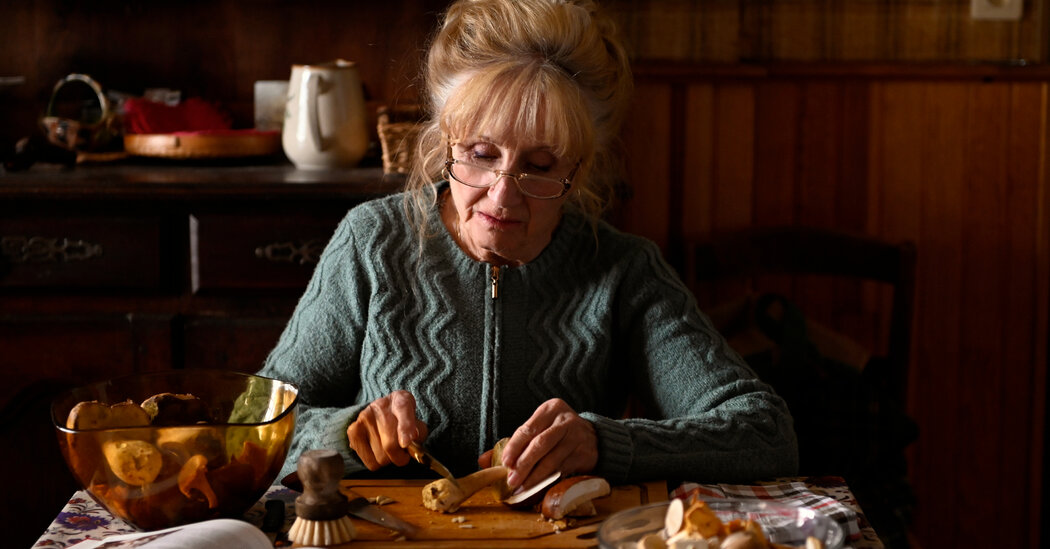For “When Fall Is Coming,” the French filmmaker François Ozon has cooked up a little mystery and an enigmatic heroine. A sleek, modestly scaled entertainment about families, secrets and obligations, it features fine performances and some picture-postcard Burgundian locations. It’s there in the heart of France, in a picturesque village in a large, pretty house, that Michelle (Hélène Vincent) makes her home. With her kind eyes, guileless smile and upswept hair, she looks the very picture of a sweet old lady. Looks can be deceiving, though, as we’re reminded, and as Ozon’s movie goes along.
Ozon’s efficiency and polished style are among his appeals — his films include “Under the Sand” and “Swimming Pool” — and he lays out this movie with silky ease. In precise, illustrative scenes he takes you on the rounds with Michelle, mapping her pleasant environs, charting her routines and introducing her small circle of intimates, including another local, Marie-Claude (Josiane Balasko), a longtime, charmingly earthy friend.
Michelle’s life and the setup seem so pacific that the movie initially teeters on the soporific; which works as a sneaky bit of misdirection. Because just when everything seems a little too frictionless, someone prepares poisonous mushrooms for lunch, and someone else eats them, a turn that puts you on alert (where you stay).
Ozon, who also wrote the script, continues to lightly thicken the plot but also withholds information, and before you know it, this obvious story has become an intrigue. One bad thing leads to another (and another), and the air crackles with menace. Michelle and Valérie argue, Marie-Claude falls seriously ill, Vincent takes a suspicious trip. Yet the more that things happen, the less you know.
Ozon sprinkles the story with hints, summons up the ghost of Claude Chabrol and, during one vividly hued autumn walk, evokes Grimm’s fairy-tale “Snow-White and Rose-Red,” about two sisters. He also foregrounds doubles: The sisterly Michelle and Marie-Claude don’t have partners, and each has a difficult adult kid. Despite their nominal similarities, Valérie and Vincent are notably different; he and his mom are openly loving, for one.
Valérie is unlikable, almost cartoonishly so, and as wholly ordinary a villain as she is a useful one. Sagnier conveys the character’s awfulness with pinpricks of humor — Valérie never seems in on the joke — and with sharp, controlled gestures and expressions. When Valérie’s eyebrows arch high in disdain, her mouth forms a humorously matching frown. Sagnier’s performance brings her character (a materialistic city dweller who hates the country) to the edge of caricature, and so does Lottin’s. His Vincent is an oafish country boy, and too loud, too big, too crude.
These performances give the story a frisson of instability while the more naturalistic ones of the actresses playing the mothers are soothingly familiar. Ozon uses the contrasting acting styles — the realism pulls you in while the hyperbolic turns keep you at bay — to emphasize the differences among the characters.
It’s easy to admire how he puts them in play and the facility with which he marshals the other elements, even if all these parts never satisfyingly fall in line. To a degree that’s because he isn’t especially interested in mystery, per se; what concerns him are the mysteries of other people, their ambiguities, and questions of nature, nurture, freedom and responsibility. He asks what do parents owe their children as he skims the surface. There’s pleasure in watching him do so (his surfaces are appealing), in a story about ladies who are old but not necessarily sweet.
Source link




